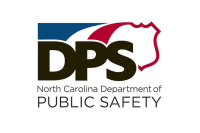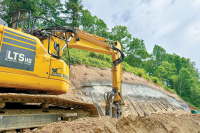Word from the Smokies: Park embarks on cutting-edge hellbender study
With wrinkly skin that comes in various shades of brown, eastern hellbenders aren’t easy to spot. These giant salamanders, which average 20 inches in length, spend most of their lives nearly invisible under rocks on the bottom of cool, fast-flowing streams.
NCWRC votes to advance Red Wolf recovery
The North Carolina Wildlife Resources Commission today voted unanimously in favor of a resolution to advance Red Wolf recovery in the state.
N.C. welcomes breed pair of Red Wolves
The Red Wolf Center in Columbia, North Carolina, is set to welcome its first-ever breeding pair of Red Wolves. This historic event, a collaboration between North Carolina Wildlife Federation, U.S. Fish and Wildlife Service and the Red Wolf SAFE (Saving Animals From Extinction) Program marks a significant milestone in efforts to conserve and protect the critically endangered Red Wolf.
Bat conservation plan out for public comment
A draft conservation plan for the federally endangered Virginia big-eared bat is out for public comment through March 1.
Endangered Species Act decisions reached for hellbender, green salamander
The eastern hellbender does not deserve listing under the Endangered Species Act, the U.S. Fish and Wildlife Service has decided, but the Hickory Nut Gorge green salamander, which was first described as a unique species in 2019, warrants a status review to consider listing.
Word from the Smokies: At 50, Endangered Species Act continues to protect life in the park
It’s no secret that the Great Smoky Mountains National Park is a hotspot of biological diversity. Not only does it offer a range of environmental conditions to support plant and animal life, no ocean or glacier has disturbed it for over a million years, giving species lots of time to evolve.
Endangered snail reintroduced to the wild
After 20 years of living only in captivity, the federally endangered magnificent ramshorn has been returned to the wild.
Endangered status proposed for three mussel species
Three freshwater mussel species have been proposed for designation as endangered species under the federal Endangered Species Act. The Cumberland moccasinshell, Tennessee clubshell and Tennessee pigtoe all occur in the Tennessee River Basin, while the Cumberland moccasinshell and Tennessee clubshell are also found in the Cumberland River Basin.
Forest plan will harm endangered bats, conservation groups say
Groups file intent to sue Forest Service
Through National Geographic Photo Ark, people can look endangered wildlife in the eye
Joel Sartore lives in Lincoln, Nebraska, but he — and his camera — are constantly on the move.





